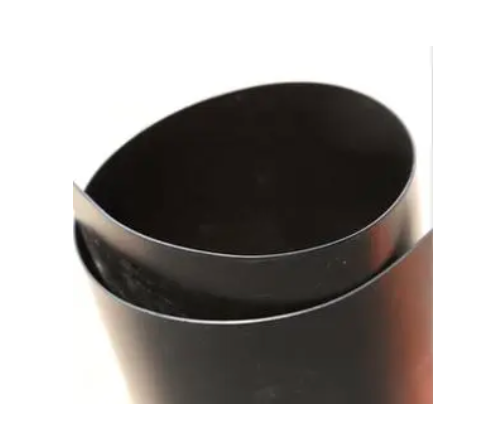- Understanding the Role of Geomembrane Liners in Waste Management
- Innovations in Geomembrane Liners for Water Management
- Geomembrane Liners: A Comprehensive Guide
- The Future of Geomembrane Liners in Civil Engineering
- Geomembrane Liners: Enhancing Landfill Stability
Manager:
WhatsApp:+86 177 0135 2670
Tel:+86 177 0135 2670
Email:marketing@okorder.com
Address:3rd Floor, No.2 Building, No.1 Sanlihe Road
The Resolute Impervious Geomembrane: A Vanguard in Modern Infrastructure
Silent sentinel is a phrase that best describes the impervious geomembrane technology in civil engineering industry. These are the leading plastic barricade sheets used in modern infrastructure that stop water from getting through, thus preventing environmental contamination and seepage. In this article, I am going to explore the story behind these GEOMEMBRANE earmarked for their protection against nature conservation.
THE MYRIAD FACES OF IMPERVIOUS GEOMEMBRANES
Human ingenuity is showcased in the versatility of impervious geomembranes. The design of artificial sheets takes into account different uses starting with water tanks construction up to landfill covers. For our society, non-permeability isn’t just a characteristic; it’s an environmental guarantee meant to protect our natural sources of water and overall ecosystems welfare.

WASTE MANAGEMENT APPLICATIONS
Deterioration and escape of leachate from sanitary landfills as well as other waste management facilities can be prevented using impervious liners which act as barriers. These geomembranes have enough resistance against chemicals and strength making them ideal for long lasting protection of surrounding soils thereby keeping away pollution.
WATER & WASTEWATER TREATMENT ENHANCEMENT
Impervious geomembranes play an important role in liner systems within water and wastewater treatment plants such as tank, reservoirs and containment structures. They shield surrounding environments by their chemical resistance and UV radiation proofing qualities thereby being preferred for treatment ponds/lagoons.
MINING AND OIL & GAS OPERATIONS
In mining locations or oil & gas operations where there exist harsh conditions, use of impervious geomembranes provides a reliable solution to containments or leakages prevention. Liners in tailings ponds among others ensure that hazardous chemical spills are prevented from contaminating the environment around them.
AGRICULTURE AND AQUACULTURE
These protective materials are used in agriculture and aquaculture where they line fish and shrimp farms, reservoirs, irrigation canals among others. They are highly valuable in these sectors due to their ability to prevent the loss of water and avoid ground water contamination.
CIVIL INFRASTRUCTURE AND CONSTRUCTION
In civil infrastructure, impervious geomembranes have wide applications ranging from liners for landfills to mining heap leach pads and waste water treatment plants. Their high tensile strength coupled with puncture resistance allows them to be used for different purposes including acting as barriers for underground storage tanks.
THE FUTURE OF IMPERVIOUS GEOMEMBRANE
Ongoing research and development is ensuring that impervious geomembranes continue improving its properties and widen its scope of application. This will render their service life longer by increasing its resistance against environmental stress cracking as well as ultraviolet radiation and keep them performing better under various conditions through material science innovations.
INNOVATION AND QUALITY ASSURANCE
The Geosynthetic Research Institute (GRI), developed GRI-GM13 which specifies test properties, testing frequency, and recommended warranty requirements for hdpe Geomembrane. The standard specification thus ensures that manufacturing quality control (MQC) is maintained, while the minimum physical/mechanical/chemical property levels needed for specific uses are achieved through it.
DURABILITY AND ENVIRONMENTAL IMPACT
Research into the durability of HDPE geomembranes highlights the process of ageing and degradation which include physical ageing and chemical ageing. The understanding of the behavior of material under different conditions is important in ensuring its long-term performance and minimal damage to environment.
FIELD PERFORMANCE AND LABORATORY STUDIES
Records for field performance on HDPE geomembranes show a considerable time period during which these materials can keep their properties intact. There are also laboratory studies supporting this feature, that is, durability as well as resistance to multiple environmental challenges by HDPE geomembranes.
ESTIMATION OF SERVICE LIFE
It is difficult to predict the service life of HDPE geomembranes due to relatively recent development in civil engineering applications. Nevertheless, accelerated aging tests and arrhenius modelling provide some knowledge about their possible service lives that may range from several centuries to less than ten years depending on types of material used or exposure conditions.
CONCLUSION
The 'impermeable liner' is not just a mere material but an epitome of excellence in construction and ecological sense. As we continue with our work towards enhancing existing materials or developing new possibilities for application – impermeable liners will always be part of any sustainable engineering work (Baskar et al., 2010). Their capability to adapt with diverse environmental situations while still managing to last for many years makes them a key asset in our search for a better world that is cleaner and more efficient.
This impervious liner acts like a signpost pointing towards an era where human development harmonizes with preservation of environment. Therefore, every project that uses such an innovative product contributes to both excellence and environmental harmony, as it ensures safe, reliable, eco-friendly solutions for constructions that can be passed down through generations.
- Previous:HDPE Geomembrane Sheet: The Basic Unit for Modern Engineering Solutions
- Next:The Fascination of ‘Piscina de Geomembrana’: A Concerto Between Innovation and Pragmatism






